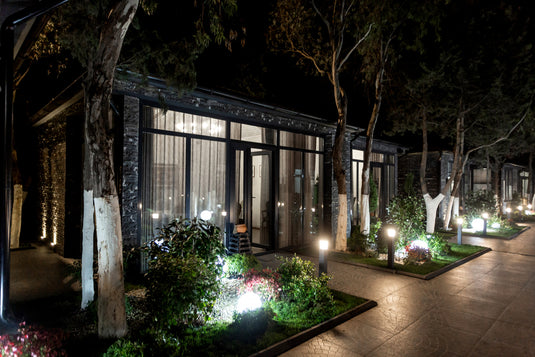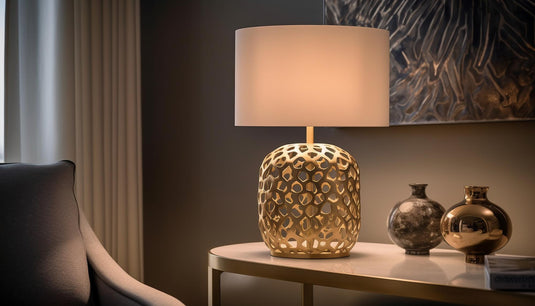
Human Centric Lighting
Human Centric Lighting (HCL) is a lighting concept that is based on scientific studies to optimize human well-being and performance through lighting meticulously adapted to needs biological, psychological and physiological aspects of people. As we advance in understanding the intricate interactions between light and the human body, an avant-garde approach is emerging that places the individual at the heart of lighting design. In a world where much of our time is spent indoors, the adoption of Human Centric Lighting emerges as an essential approach to promoting health, productivity and quality of life.
Simulate Natural Light Throughout the Day with Human Centric Lighting
One of the fundamental building blocks of Human Centric Lighting is the simulation of natural light during the daily cycle. This approach involves creating luminous environments that follow the progression of sunlight, adjusting throughout the day to resemble the spectrum and intensity of natural light. This synchronization is crucial for regulating the circadian rhythm, the internal mechanism that aligns biological and behavioral processes with the natural cycle of light and dark. By reproducing this harmony, Human Centric Lighting not only improves the quality of sleep, but also influences various aspects of human functioning.
Circadian Lighting - A Pillar of Human Centric Lighting
Within the context of HCL, Circadian Lighting plays a prominent role. The basis of this concept lies in an in-depth understanding of the circadian rhythm, an intricate biological system that regulates a variety of physiological and behavioral functions, including sleep, hormone release, and alertness. Light is the main regulator of this biological clock, with adequate exposure to light throughout the day being crucial to maintaining a healthy and well-adjusted circadian rhythm.
Circadian Lighting aims to imitate the natural cycle of sunlight, adjusting the light spectrum and light intensity according to different times of the day. This is especially relevant indoors, where exposure to natural light is often limited. By synchronizing the circadian rhythm with the progression of light, Human Centric Lighting contributes to the maintenance of several vital functions, from metabolism to hormone production.
Consequences of Circadian Rhythm Disruption: Impact on Health and Performance
Disruption of the circadian rhythm due to inadequate exposure to artificial light can have a number of negative impacts on human health and performance. Artificial light, especially that with a high blue spectrum content, can interfere with the production of melatonin, a hormone vital for healthy sleep and for the regulation of various biological processes.
When the circadian rhythm is out of alignment, a number of problems can occur. Cognitive function can be impaired, leading to difficulties with concentration, memory and problem solving. Furthermore, mood swings, increased risk of chronic diseases such as diabetes and cardiovascular disorders, and even decreased productivity are possible consequences of circadian rhythm disruption.
Human Centric Lighting: Benefits Proven by Science
The human-centered approach to lighting has been the subject of rigorous studies, with notable results. A number of clear and scientifically proven benefits are associated with implementing HCL:
- Sleep Quality: Poor sleep quality is an increasingly prevalent problem in modern society. Human Centric Lighting offers a promising solution, enabling the creation of healthier and more revitalizing sleep environments. By carefully regulating light exposure, it is possible to improve sleep effectiveness, reduce insomnia problems and promote more restorative and rejuvenating sleep.
- Mood and Emotional State: Light plays a fundamental role in emotional and mental health. HCL can be customized to meet individual needs, providing lighting that promotes positive moods, reduces stress and even helps treat emotional disorders such as depression and anxiety. By optimizing light exposure, Human Centric Lighting becomes a powerful tool for improving emotional well-being.
- Productivity and Performance: Well-lit environments have a significant impact on the human ability to concentrate and perform tasks efficiently. HCL provides ideal lighting conditions to enhance concentration, focus and cognitive performance. By aligning artificial lighting with the natural rhythms of light and dark, HCL promotes vigilance during working hours, reduces fatigue and improves the ability to solve complex problems.
- Health and Wellbeing: The implementation of HCL carefully considers the biological effects of light on various physiological processes. This includes hormonal regulation, immune function, and metabolism. Human Centric Lighting can help improve overall health, increase energy levels and promote a healthier lifestyle. Furthermore, well-planned lighting design is crucial for eye health and the prevention of visual discomfort.
Technologies and Solutions for Implementing Human Centric Lighting
The successful implementation of Human-Centered Lighting requires a combination of advanced technologies and innovative lighting design approaches. Automation systems and sensors can be used to automatically adjust lighting according to natural light conditions and occupant needs.
Customizing a lighting project is something that also plays a crucial role in the implementation of Human Centric Lighting. Each individual is unique and their lighting needs may vary based on factors such as age, health and daily activities. Therefore, user-centric lighting solutions that allow personalized adjustments are essential to ensure maximum benefits.
The Bright Future of Human Centric Lighting
Human-centered lighting transcends the conventional boundaries of lighting design, opening doors to a world of tangible benefits for human health and well-being. By simulating natural light, synchronizing the circadian rhythm and creating environments that adapt to individual needs, HCL emerges as an indispensable approach to our modern way of life.
As designers, engineers and researchers continue to collaborate, we can anticipate even more exciting advances in the field of Human Centric Lighting. The continuous evolution of technology and in-depth research in this field offer the promise of improving our quality of life and opening up new possibilities for the future of lighting.
Conclusion
Human Centric Lighting is much more than a momentary trend; it's a transformative approach that puts people at the center of enlightenment. By simulating the benefits of natural light, synchronizing the circadian rhythm and adjusting lighting according to people's biological and emotional needs, HCL offers a wide range of benefits, from improving sleep to increasing productivity and well-being. be emotional.
If you want to transform your space into an environment that promotes health and well-being, adopting Human Centric Lighting is the answer. Contact us for advice on lighting products with the necessary features to create a luminous environment that enhances your well-being.
For lighting projects based on Human Centric Lighting, visit the website www.vluz.pt.











